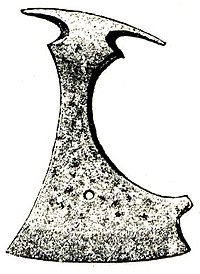
Photo from wikipedia
In neoclassical economic theory, the dynamics of development is mainly described by the Solow production function (Solow model), which determines the growth of the aggregate income of a country or… Click to show full abstract
In neoclassical economic theory, the dynamics of development is mainly described by the Solow production function (Solow model), which determines the growth of the aggregate income of a country or an individual company depending on the main economic factors, such as physical capital, labor, and technological progress, driven by technological revolutions. In the upcoming digital economy, the key role will be played by technological information, which includes the knowledge and know-how needed to create high-quality goods and services that meet individual preferences, rather than mass demand, as before. It follows that the most appropriate mathematical model for describing the economic dynamics in the digital age is the half-forgotten Ramsey–Cass–Koopmans model with optimization of the consumer behavior of a representative household. This paper shows that this model implies the need to ensure the exponential growth of technological information in order for the economy to move along an optimum development trajectory. The main advantage of the Ramsey–Cass–Koopmans model is the transformation of practically significant economic development tasks into the problem of optimizing the corresponding Lagrangian or Hamiltonian, with each Lagrangian (Hamiltonian) generating a certain mode of production of technological information. Thus, it is through the Lagrangian (Hamiltonian) that the functional connection between economic growth and the dynamics of the production of technological information is established. For the first time, a formula has been obtained that links the pace of technological progress with the pace of production of technological information and can be the basis for developing an information model of economic dynamics. Examples of real modes of production of technological information used to calculate the trajectories of technological progress in the information–digital era are given.
Journal Title: Differential Equations
Year Published: 2019
Link to full text (if available)
Share on Social Media: Sign Up to like & get
recommendations!